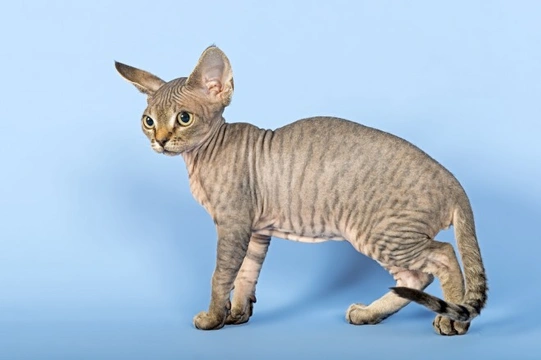
Six cat breeds that originate in the UK
The cat is of course one of the most popular pets in the UK, vying for position at the top of the list with the dog. It is estimated that 30-40% of all British households own a cat, and while there are of course several popular pedigree breeds, the common or garden moggy is overall the most widely owned.
If you were asked to name a few breeds of cat that originated in the UK, however, you would probably get as far as the British shorthair and British longhair, and then possibly run out of ideas; but Britain is home to several native cat breeds, and in this article, we will take a quick look at six of the most popular ones. Read on to learn more.
The British shorthair
The British shorthair is one of the best known British cat breeds, and is also one of the most widely owned of our pedigrees. They are reasonably large cats with a cobby, powerful build, and short, plush coat that is very strokeable! They can be found in virtually any colour variant, as well as having eyes in any potential colour, including in some cases, one blue eye and one coloured eye. The most popular and in demand colour for the British shorthair is blue, known as the British blue, and often sometimes mistaken for a whole other breed in its own right.
The breed was developed in the 1800’s from the common domestic moggies that were widely owned at that time.
The British longhair
The British longhair is actually semi-longhaired rather than being a truly longhaired cat, and is very similar in build to the British shorthair, being large, solidly built and cobby in appearance. The breed is rather less common than the British shorthair, and unusually, is not recognised as a breed in its own right by our own UK cat registry, the Governing Council of the Cat Fancy (GCCF).
However, the breed is recognised separately by The International Cat Association, which has led to the breed becoming more popular within the UK, and several dedicated breeders now produce British longhair cats, with a view to ultimately gaining the breed separate recognition.
The Scottish fold
The Scottish fold cat can be seen in either a shorthaired or longhaired variety, and as the name suggests, originates from Scotland. The breed is of course most distinctive due to the signature fold of the ears of the cat, which first occurred in a Scottish farm cat in the 1960’s as the result of a genetic mutation. While the appearance of the breed is undeniably cute, the mutation that leads to the folded ears can also cause some other conformation problems that may be detrimental to the health of the cat, and for this reason, the GCCF does not accept the Scottish fold as a pedigree breed, nor promote their ownership.
However, the breed is recognised by many international cat registries, meaning that the Scottish fold is overall more common outside of the UK than within their home country.
The Devon Rex
The Devon Rex is the first of our two native cats with short, curly hair, which of course gives them a very unique and unusual appearance! The Devon Rex breed was founded in the 1960’s, when one single curly-coated kitten was found within a litter with otherwise normal coats. This kitten was then selectively bred with other cats, to strengthen the genetic mutation that leads to the curled coat, and ultimately, produce the breed.
Unlike the Scottish fold’s curled ear mutation, the curly coated gene mutation does not come accompanied by any other known issues. However, inbreeding within a very small gene pool, as is necessary to establish a breed, can cause problems of its own.
The Cornish Rex
The Cornish Rex is the second of our curly coated native breeds, and this trait, along with the fact that Cornwall and Devon are bordering counties, initially led many people to believe that the two breeds were either closely related, or actually exactly the same.
However, the Cornish Rex breed was founded a whole decade before the Devon Rex, and is known to be completely unrelated to the later anomaly that led to another curly-coated cat being born in Devon. Like the Devon Rex though, the Cornish Rex’s curly coated genes do not come accompanied by any other hereditary health problems.
The Manx cat
The Manx cat is native to the Isle of Man, and is a large, stocky breed with one very distinctive feature: their tails, or rather lack of them! The Manx cat is famed for having no tail at all, but in reality, most cats of the breed do have a tail, albeit much shorter than the norm, and in some cases, being just a couple of inches long. They also have a very distinctive running gait, which involves hopping with their back legs, making them instantly recognisable for two reasons!



